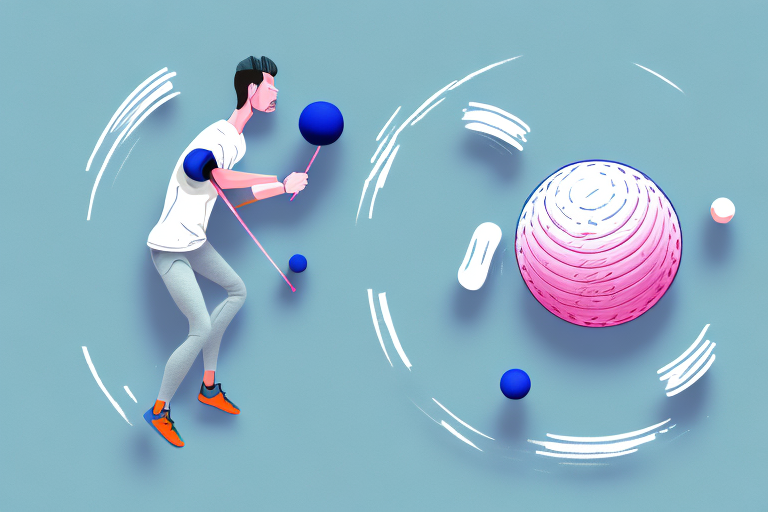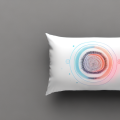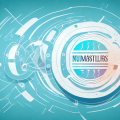Muscle relief and recovery are essential for maintaining a healthy and flexible body. Proper muscle recovery techniques can help reduce muscle soreness, reduce inflammation, and improve your overall performance during your workouts. Foam rolling, trigger point, and lacrosse ball techniques are three popular muscle recovery techniques that have gained much popularity in recent years. Today, we will discuss these techniques and how to use them to get the most benefit for your muscles.
Understanding the Importance of Muscle Relief and Recovery
When you work out, your muscles undergo physical stress and strain. This strain causes tiny muscle fibers to tear, leading to microscopic damage in the muscle. As your body begins the healing process, inflammation sets in, causing muscle soreness and stiffness. Proper muscle relief techniques can help reduce the impact of these symptoms and speed up the healing process. Muscle relief and recovery techniques thus help you minimize muscle soreness and maintain muscle function, ensuring your overall health and fitness.
One effective muscle relief technique is foam rolling. Foam rolling involves using a foam roller to apply pressure to specific areas of the body, helping to release tension and improve blood flow to the muscles. Another technique is stretching, which can help improve flexibility and reduce muscle soreness. Additionally, getting enough rest and staying hydrated can also aid in muscle recovery. By incorporating these techniques into your workout routine, you can help prevent injury and improve your overall performance.
The Benefits of Foam Rolling, Trigger Point, and Lacrosse Ball Techniques
Foam rolling, trigger point therapy, and lacrosse ball techniques all help reduce muscle soreness, improve flexibility, and improve circulation. Using these techniques can help break up scar tissue, increase blood flow, and improve overall muscle function.
In addition to the physical benefits, foam rolling, trigger point therapy, and lacrosse ball techniques can also have a positive impact on mental health. These techniques can help reduce stress and anxiety by promoting relaxation and releasing tension in the body. Incorporating these techniques into a regular exercise routine can lead to improved overall well-being.
How to Choose the Right Foam Roller, Trigger Point Ball, or Lacrosse Ball for Your Needs
When choosing a foam roller, avoid selecting one that is too soft or too firm. You want a roller that is stiff enough to apply pressure to your muscles, but not so stiff that it causes pain or discomfort. Lacrosse balls and trigger point balls should also be chosen with care. They should be sized adequately, so they apply pressure accurately without causing any injury.
It is also important to consider the texture of the foam roller or ball. Some rollers have smooth surfaces, while others have ridges or bumps. The texture can affect the intensity of the massage and target specific areas of the body. For example, a foam roller with ridges may be more effective for targeting knots in the muscles, while a smooth roller may be better for general use. Similarly, a trigger point ball with spikes may be more effective for deep tissue massage, while a smooth ball may be better for more gentle pressure.
Foam Rolling Techniques for Different Muscles Groups
Foam rolling is an excellent way to enhance muscle mobility and release tension. Different muscle groups require different foam rolling techniques. For example, you can use foam rolling techniques to alleviate tension and soreness in your back and improve hip mobility. Foam rolling on calves, hamstrings, and quads helps alleviate soreness and improve flexibility.
It is important to note that foam rolling should not be used as a substitute for stretching. While foam rolling can help release tension and improve mobility, stretching is necessary to improve flexibility and prevent injury. Additionally, it is recommended to consult with a healthcare professional before starting any new exercise or foam rolling routine, especially if you have any pre-existing medical conditions or injuries.
Trigger Point Therapy: How to Find and Release Trigger Points in Your Body
Trigger point therapy involves applying pressure to specific points on your body to alleviate muscle tension and pain. The pressure is applied to points that are sensitive to any discomfort or tenderness. These points are known as trigger points. Trigger point therapy can be performed using your hands, rolling balls or by using a foam roller. This technique is helpful in relieving pain on different areas of the body such as back, shoulders, hips, and arms.
It is important to note that trigger point therapy should be done with caution and under the guidance of a trained professional. Applying too much pressure or using improper techniques can lead to further injury or discomfort. It is also recommended to drink plenty of water after a trigger point therapy session to help flush out any toxins released during the process. With proper technique and guidance, trigger point therapy can be a helpful tool in managing muscle pain and tension.
Lacrosse Ball Techniques for Deep Tissue Massage
Lacrosse ball technique, on the other hand, is a form of self-massage commonly used in deep-tissue therapy. It involves using a small, hard ball (lacrosse ball) to apply pressure to specific areas of your body to relieve tension in your muscles. Lacrosse ball therapy is often used on tight areas, such as the glutes, hips, and lower back, to help alleviate tightness or pain.
One of the benefits of using a lacrosse ball for deep tissue massage is that it allows you to target specific trigger points in your muscles. These trigger points are areas of muscle that are particularly tight or tender, and can cause pain or discomfort. By applying pressure to these trigger points with a lacrosse ball, you can help release the tension and alleviate the pain. Additionally, using a lacrosse ball for self-massage can be a cost-effective alternative to seeing a professional massage therapist, as you can perform the technique on your own at home.
Combining Foam Rolling, Trigger Point, and Lacrosse Ball Techniques for Maximum Muscle Relief
These techniques can be used in combination for maximum muscle relief. One example is using a foam roller or trigger point ball to target areas of pain and soreness and then using a Lacrosse ball to apply deeper pressure to relieve tension. Ensure that you apply these techniques adequately to avoid any potential injury.
Pre-Workout and Post-Workout Muscle Recovery Tips
It would help if you also used pre-workout and post-workout tips to ensure maximum muscle recovery. It includes proper hydration, adequate sleep, and a balanced diet tailored to support muscle health. Stretch before and after working out to warm up your muscles and prevent any injury. Post-workout nutrition plays a huge role in muscle recovery as it helps rebuild the muscles after the workout. Consuming foods rich in protein, carbohydrates, and healthy fats will help replenish the energy used during the workout.
Common Mistakes to Avoid When Using Foam Rollers, Trigger Point Balls, or Lacrosse Balls
Using foam rollers, trigger point balls, or lacrosse balls incorrectly can lead to more harm than good. Common mistakes to avoid include rolling too quickly or too slowly, rolling too long or too intensely, or targeting the wrong areas. Always remember to start slow, apply adequate pressure, and listen to your body.
Using foam rolling, trigger point, and lacrosse ball techniques can help improve muscle health, reduce muscle soreness, and improve flexibility. Start by selecting the right tools and techniques for your specific needs, and ensure that you are applying the techniques correctly. Combined with pre and post-workout nutrition, these techniques can help you maintain a healthy and flexible body.





